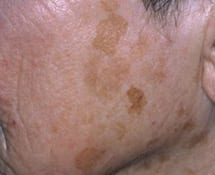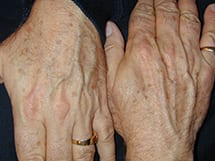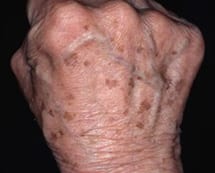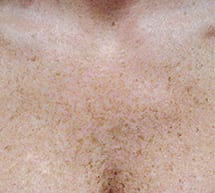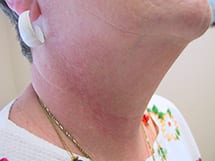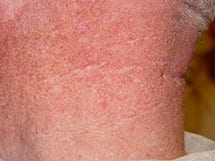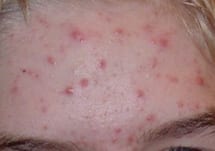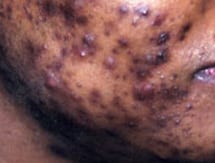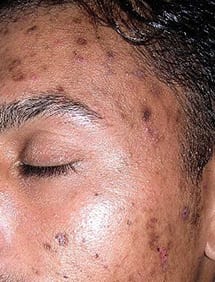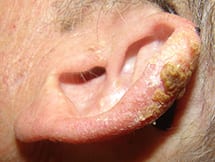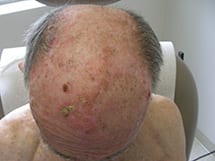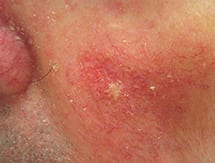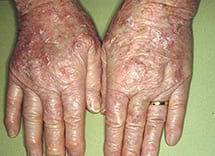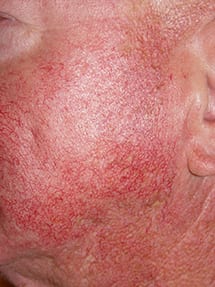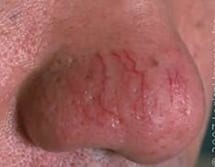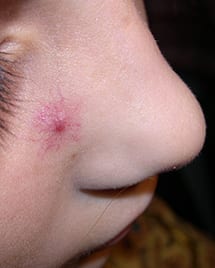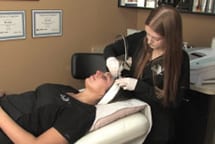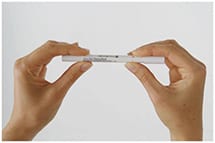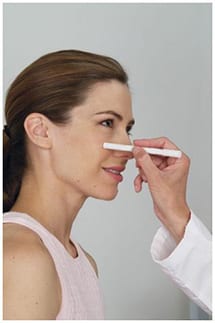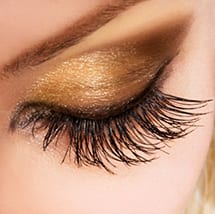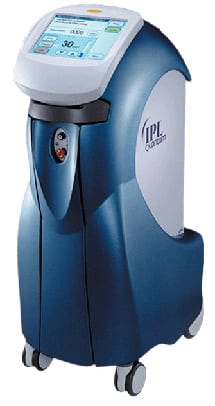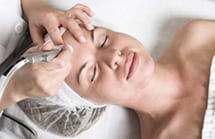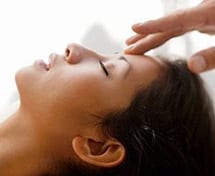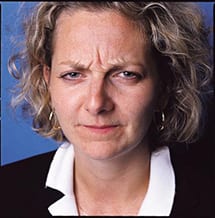Levulan-IPL PDT Skin Rejuvenation
Intense Pulsed Light ALA-Photodynamic Therapy
Would you like to see a preview?
- Please click here to watch a video clip in which Dr. V discusses Intense Pulsed Light Fotofacials (Photofacials, IPL)
Levulan-IPL Photodynamic Therapy
-
Living with acne, precancerous sun spots, or scarring due to acne is not a condition that needs to be accepted
- Levulan-IPL Photofacial light therapy is a treatment that is non-invasive and effective
- It is used to treat acne, actinic keratoses (prec-cancerous sun spots) as well as sun-damaged skin
- This procedure is non-invasive
- Almost any area can be treated including:
- Face
- Neck
- Hands
- Feet
- Arms
- Legs
- Chest
- Back
- Scalp
- The Levulan-IPL PDT treatment works with most skin types (I-IV) (from pale Caucasian to dark European and very light Asian)
- Levulan-IPL PDT cannot be used for darker skin types (V, VI) (South Asian, African) or if you have a tan
- In this situation I recommend Blue Light PDT instead, which:
- Can be used in all skin types
- Can be used even if the skin is tanned
- To learn more about Blue Light PDT, please click here
- In this situation I recommend Blue Light PDT instead, which:
- Levulan-IPL PDT acts by killing acne causing bacteria, overactive oil glands and premalignant skin cells and precancers
What is Levulan Photodynamic Therapy?
- IPL (Intense Pulsed Light) is combined with a topical medication called Levulan in a procedure known as Levulan Photodynamic Therapy (PDT)
- Photodynamic therapy for acne, precancerous sun spots and other uses, involves the application of Levulan ( 5-aminolevulinic acid), a medication which is then activated with blue light
- Photodynamic Therapy (PDT) is also known as ‘ALA/PDT treatment’
- ALA/PDT treatment also has the unique ability to reduce oil glands, effectively treating stubborn acne and improving the appearance of some acne scars
What is IPL?
- Intense Pulsed Light (IPL) also known as photo-facial, fotofacial, and photo rejuvenation is a state-of-the-art system and the latest technique in photofacial therapy
- The IPL system delivers high intensity, smooth and powerful pulses of light (not lasers) that leads to skin rejuvenation
- For skin therapy, IPL stimulates new collagen growth resulting in smoother, more even, healthier skin
- IPL contains many wavelengths of light energy including ‘blue light’
What is Levulan?
- Levulan (5-Amino Levulinic Acid) is a medication that is applied to the skin
- This medication makes acne-causing bacteria and precancerous sun spots more sensitive to the IPL treatments
Can Levulan-IPL Photodynamic therapy be used to treat acne?
- Yes
- This results in significant improvement in mild to moderately-severe acne
- Acne can be treated with topical creams and lotions, birth control pills, antibiotic pills, retinoids, chemical peels and microdermabrasion
- Now PDT is another safe and effective alternative available for acne treatment
- Levulan-IPL PDT acne treatment involves three mechanisms of action against acne including:
- Inactivation of the bacteria that trigger acne
- Exfoliation of the skin to unclog pores
- Shutting down the oil glands (sebaceous glands) in the skin
- This can produce long-lasting improvement
- Levulan acne therapy can even work in patients who have failed prescription pills
- Results with Levulan PDT are especially impressive when compared with conventional treatments, such as topical medicines and oral antibiotics
Can Levulan Photodynamic Therapy be used for skin rejuvenation, precancerous sun spots, improvement of sun damage and skin cancer prevention?
- Yes
- Levulan Photodynamic Therapy using intense pulsed light (IPL) is now the gold standard for non-surgical skin rejuvenation
- This procedure results in significant improvement in precancerous conditions such as:
- Actinic keratoses
- Sun damaged skin
- Superficial skin cancers
- Additionally it potentially prevents the development of skin cancer
- Levulan is revolutionizing how we perform skin rejuvenation and how we treat sun-damaged skin
- Levulan is preferentially absorbed by precancerous cells
- When combined with IPL the Levulan kills the cancer cells, and leaves the normal skin unharmed
- It is particularly effective for actinic keratoses on the scalp, face, arms and legs
- It has the added benefit of skin cancer prevention, killing abnormal cells before they can become a skin cancer
- Even those people with no obvious sun spots can be treated to prevent skin cancer from developing
Can Levulan Photodynamic Therapy be used to treat freckles and skin pigmentation?
- Yes
- They might have been cute when you were younger, but those freckles you have now probably aren’t as attractive as they once were
- Even more, they are actually signs of sun-damaged skin
- All those years at the beach add up, even if you can’t see the damage it has caused
What else can Levulan Photodynamic Therapy be used for?
- Acne
- Severely sun damaged skin
- Enlarged pores
- Precancerous sun spots (actinic keratoses, skin cancer prevention)
- Enlarged oil glands (sebaceous hyperplasia)
- Irregular pigmentation
- Freckling
- Liver spots (solar lentigenes)
- Uneven skin texture
What is the difference between Levulan-IPL Photodynamic therapy and Blue Light Photodynamic therapy?
- The two treatments are quite similar, with some subtle differences
- In both treatments:
- Levulan is applied to the skin and incubates
- You will be very sensitive to sunlight or bright lights for 48 hours after the treatment and must be extremely careful to avoid exposure to light
- The Levulan is activated with a light source
- In Blue Light PDT, Blue Light is used to activate the Levulan
- In IPL-PDT, IPL (Intense Pulsed Light) is used to activate the Levulan
- Both Levulan-IPL PDT and Blue Light PDT can both be used to treat:
- Acne
- Pre-cancerous sun spots (actinic keratoses)
- The differences are:
- Levulan-IPL PDT
- Cannot be used on tanned skin
- Cannot be used on darker skin types (South Asian, African)
- The advantage for Levulan-IPL is that it can also be used to treat:
- Enlarged capillaries
- Telangiectasia
- Freckling
- Enlarged pores
- Enlarged oil glands (sebaceous hyperplasia)
- Irregular pigmentation
- Liver spots (solar lentigenes)
- Uneven skin texture
- Blue Light PDT
- Can be used on all skin types
- Can be used on tanned skin
- Will not remove:
- Enlarged capillaries
- Telangiectasia
- Freckling
- Enlarged pores
- Enlarged oil glands (sebaceous hyperplasia)
- Irregular pigmentation
- Liver spots (solar lentigenes)
- Uneven skin texture
- If you wish to learn more about Blue Light PDT, please click here
- Levulan-IPL PDT
Does it Hurt?
- There is some discomfort associated with the treatment
- Each pulse of the IPL feels like an elastic band snapping against the skin
- To make the treatment more comfortable the IPL machine is equipped with a chilling tip that cools the skin prior to treatment
How safe is it? Are there any side-effects?
- The Levulan-IPL PDT treatment is very safe
- The IPL light penetrates just deep enough into the tissue to reach the acne target
- It only affects the P. acnes bacteria, not the normal tissue
- It contains NO radiation and does not damage the skin itself
- It has NO risk of causing cancer
- Even though there is no evidence of complications, we will not perform this treatment if you are pregnant or breastfeeding
How Do I select where I should go for Levulan-IPL PDT treatment?
- Unfortunately there are no government regulations as to who can own or operate an IPL machine or perform PDT therapy
- There is no minimal training required by regulatory agencies and virtually anyone who has the capital can purchase a machine and start doing treatments
- For those reasons, you have to be very careful where you go
- There are several questions you should ask:
- Is the clinic a doctor’s office or a spa?
- Levulan-IPL PDT can be potentially dangerous if not used by well trained technicians
- How long have they been doing treatments?
- Is there a doctor?
- Is the doctor someone who is specialized in skin care and photodynamic therapy, such as a dermatologist?
- Or is the doctor a family doctor? Dentist? Chiropractor?
- What are the qualifications of the technician who is treating you?
- What type of IPL machine are they using?
- Who will manage any complications is they should happen to arise?
- Does the technician do a full and in depth consultation with you to ensure that you understand the pros and cons of treatment, the risks and benefits?
- Do they take photographs to help monitor improvement?
- Does a dermatologist check you first to make sure that you are a good candidate for therapy?
- Is the clinic a doctor’s office or a spa?
How do I prepare for my treatment?
- The face should be cleansed with soap and water and free of any oil
- Make-up cannot be worn during the treatment
- Make-up may be re-applied immediately after the treatment
What is the procedure for Levulan Photodynamic therapy?
- At your first visit a Levulan-IPL PDT technician will provide a free consultation
- During the consultation she will discuss the benefits of Levulan-IPL PDT, explain the procedure and benefits to you and answer any questions that you may have
- Furthermore she will explain how the procedure works and how many treatments you will need, and provide you with a price quote
- She will also ask you a series of questions to determine if you are a good candidate for the procedure and to determine your skin type and sensitivity
- After your FREE consultation the technician will call in Dr. Vignjevic
- He will assess your skin type and whether Levulan-IPL PDT would be suitable for you
- In addition, he will answer any further questions that you may have
- You cannot be treated by the technician unless you have been assessed by Dr. Vignjevic first
- If you decide to go ahead with a treatment, photographs will be taken of the treatment area
- These photographs are strictly for your chart and will not be released or used without your permission
- Your privacy is of the utmost importance to us
- You will be asked to wash your face and to remove any makeup
- It is not necessary to remove mascara, lip stick or lip liner
- After this, the Photodynamic Therapy technician will initially cleanse the skin
- She may use microdermabrasion (a fine spray of crystals) to remove dead skin cells and impurities
- Microdermabrasion prior to treatment improves the penetration and effectiveness of the Levulan
- When treating precancerous sun spots on the scalp, chest or back, acetone is used to remove skin oils prior to treatment
- Acetone is not used on the face as it is too irritating for facial skin
- After the skin is cleansed, Levulan, which is a clear solution, is applied with a cotton tipped applicator
- Levulan can be applied to treat any area of the body including the face, scalp, chest, back, arms groins and underarms
- The medication is left to rest on the face and neck for 60 minutes; on the chest, back, arms and legs for 180 minutes
- This application time is termed the incubation period
- Short incubation times retain efficacy but diminish discomfort and side effects
- After the incubation period, the area is illuminated with Intense Pulsed Light (IPL)
- Your eyes are covered with special goggles during the treatment
- A cold, soothing gel will be applied and a glass prism (pyramid) will then be placed over the gel and treatment area
- The portion of the IPL machine that is in contact with your skin is about the size of a quarter
- An intense flash of light, or pulse, is flashed through the prism where it is directed at the area to be treated
- This initial treatment may not be as aggressive as your following treatments so as not to possibly damage the skin and to determine your skin’s tolerance for further fotofacial treatments
- You may need a spot or test patch to make sure there are no negative reactions
- During the treatment you may feel stinging, tingling, prickling, or burning of the lesions, but this should go away after the treatment
- After treatment with Intense Pulsed Light, the gel will be washed off the skin using soap and water
- A healing cream is applied to the skin, and then a layer of sunscreen is applied last prior to leaving the office
- No anaesthetic topical cream is needed prior to the light exposure because the treatment is painless
- You will be provided with a booklet of after-care instructions and the technician will recommend specific products to take care of your skin after the treatment
- You will be provided with Dr. Vignjevic’s personal cell phone number should you have any questions or concerns that arise after office hours
What should I expect after my treatment?
- There will be redness, and occasionally, mild blistering or bruising of the treated areas lasting from several hours to 3-14 days
- This will depend on the sensitivity of your skin and the severity of your sun damage
- The treated area might “crust”, “flake”, or look like a “cat scratch”
- Any areas that become crusted are pre-cancerous areas that have been successfully treated
- Some crusting and scabbing is considered a good result
- This should resolve within 3-14 days
- Most people are completely healed within 7 days
- Your skin will be more sensitive for a few days, up to a couple of weeks after your treatment
- There should be some discomfort, but no significant pain
- After 1 week, there might be some residual redness that will subside after a few days and can be covered with make up
Special precautions for 1 week after your treatment:
- Keep the treated area out of the sun and bright lights for 48 hours
- Exposure to the sun within this time period can lead to a severe blistering burn in the areas that were treated
- If outdoor exposure sun is unavoidable, wear a hat with a brim, cover your face with a scarf, wear large sunglasses and use sunscreen
- Sunscreen alone is NOT ENOUGH PROTECTION to prevent a burn in the first 48 hours after treatment
- You should continue to use sunscreen daily for at least 4 weeks following treatment regardless of the time of year or if it is overcast or cloudy
- Sun exposure may lead to the production of blotchy dark pigmentation which may take several months to fade
- Avoid excessive heat exposure such as saunas, steam rooms, hot showers or baths, and strenuous exercising for 24 hours
- This prevents the risk of blistering
- You can return to normal activities immediately after treatment, as long as you avoid bright light and sunlight for 48 hours
- Avoid any aggressive skin care products such as scrubs, exfoliants, alpha or beta hydroxy acid products
- Keep clothing from rubbing the treated area and avoid other irritation to the area
- Do not get hairspray on the treated area
- Notify the office should you have any prolonged redness, excessive puffiness, or other unusual side effects
Skin Care Regimen – immediately after treatment and between your treatments
- Specific instructions regarding cleansers, moisturizers and sunscreen use will be provided to you on the day of your treatment
What should a person do if they get significant redness, swelling, or pain after a treatment?
- Avoid the sun or bright lights as much as possible
- Call the office where you had your treatment
- If you are concerned that you have had an abnormal reaction, have a cold sore, or an infection – call your doctor’s office immediately
Who should not have PDT (Levulan Photodynamic Therapy) treatments?
- You should not be treated if you have:
-
- Skin sensitivity to blue light
- Porphyria (a disorder of the blood that can lead to sensitivity to light)
- Allergies to chemicals called porphyrins
- Lupus
- A tan
- You must NOT be tanned when you come in for your Levulan PDT treatment
- Treating skin with a tan can produce white “striping” which can take several months to fade
- Your skin MUST NOT BE TANNED
Is the cost of Levulan PDT covered by drug insurance?
- Sometimes
- Treatment of acne and actinic keratoses (precancerous sun spots) may be partially covered if you have private drug insurance
- OHIP and regular provincial drug plans do not cover the cost of Levulan PDT therapy
- To see if your private drug insurance will cover a portion of the cost of the treatment , call your insurance company and provide them with the Drug Identification Number (D.I.N.) for Levulan – 02243933
- They can tell you if it is covered and how to get coverage
- If you require paperwork to be filled out for your insurance company, we will gladly help you
How many treatments are required?
- Typically, treatment sessions are approximately 1 to 2 hours long, once per month
- Precancerous sun spots (actinic keratoses) require one to 4 treamtents with annual maintenance
- Treatment of sun damage, freckling and broken capillaries requires one to 4 treamtents with annual maintenance
- Acne usually requires 4 to 8 treatments, with maintenance every 4 to 6 months
- It is important to keep the treatment appointments recommended
- By following the treatment plan, you’ll see maximum results and enjoy clearer skin
Which aesthetic products or procedures can be combined with Blu-U PDT Treatments?
- Medical Facials, Microdermabrasion, Chemical Peels, and Mineral Make-Up, Eye Lash Enhancing Treatments and Injections for Wrinkles can be successfully combined with Levulan-IPL Photodynamic Therapy
- Medical Facials
- This is a clinical facial, using pharmaceutical grade products by our qualified staff
- This is a relaxing, enjoyable treatment which leaves the skin silky and hydrated
- Recommended for:
- Dehydration
- Photodamage (sun damage)
- Aging Skin
- Acne
- Dull Skin
- Skin that needs rejuvenation
- To learn more about medical facials, please click here
- Microdermabrasion and Chemical Peels (Lactic and Lactic with Retinoic Boost) help to:
- Unclog pores
- Improve skin tone
- Remove devitalized and dead skin cell
- Give the skin a fresh glow
- To learn more about Chemical Peels, please click here
- To learn more about Microdermabrasion, please click here
- Injections for Wrinkles treat and improve:
- Frown lines
- Forehead lines
- Crow’s Feet
- Bunny Lines (on the nose)
- Smoker’s lines
- To learn more about Injections for wrinkles, please click here
Liver Spots (Lentigenes) can be treated with PDT
Liver Spots – Hands
Solar Lentigenes (Liver Spots) – Hand
Solar Lentigenes – Face
Solar Lentigenes – Chest
Poikiloderma of Civatte – Neck – can be treated with PDT
Poikiloderma of Civatte – Back of Neck
Acne can be treated with Levulan-IPL PDT
Acne – Cheek
Acne can be treated with Levulan-IPL PDT
Actinic Keratosis – Ear – Can be treated with Levulan PDT
Actinic Keratoses – Scalp
Actinic Keratosis – Cheek
Actinic Keratoses – Hands – Can be treated with Photodynamic Therapy
Telangiectasia – Cheek
Spider Hemangioma – Cheek
Levulan Dispenser
Levulan being applied to the skin prior to PDT activation
What if you are interested to learn more?
If you would like to learn more please phone the aesthetic centre directly at (905) 549-7873 to book a free consultation with one of our knowledgeable technicians or

